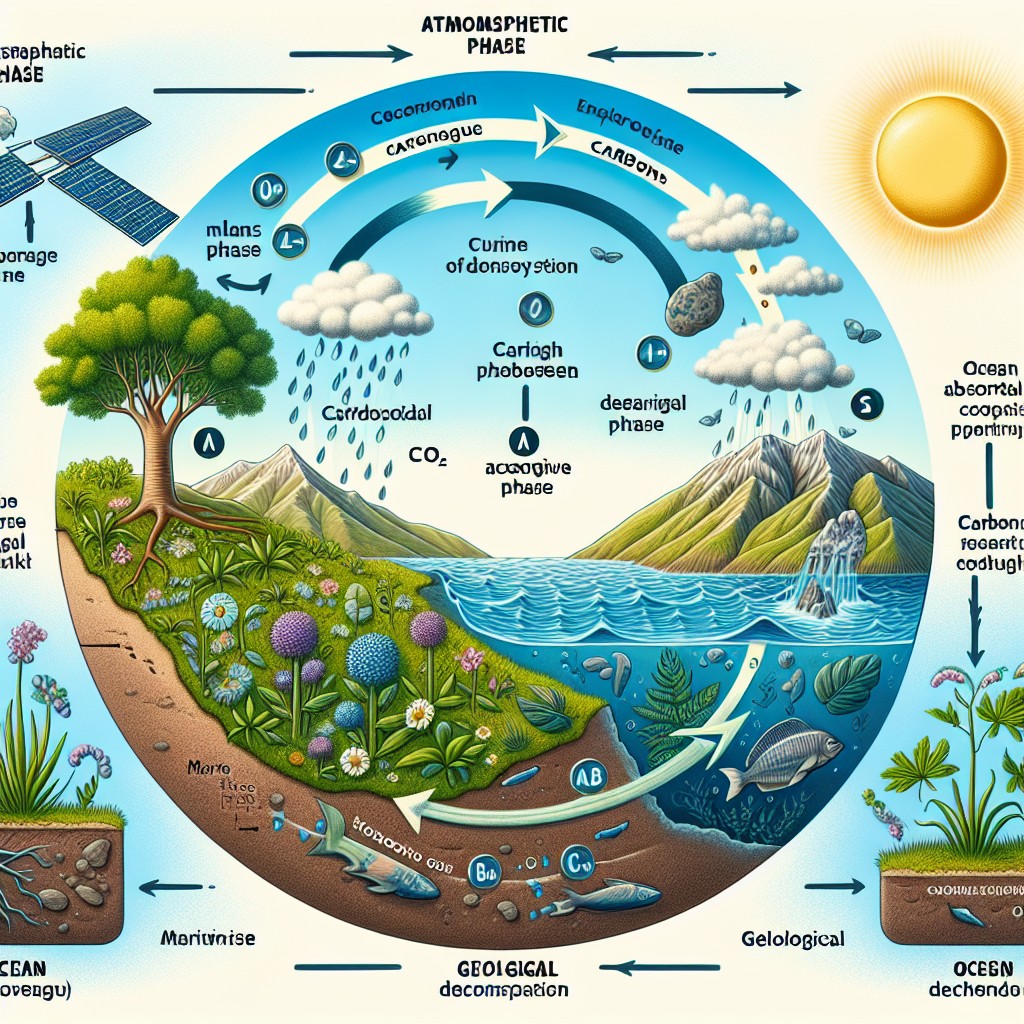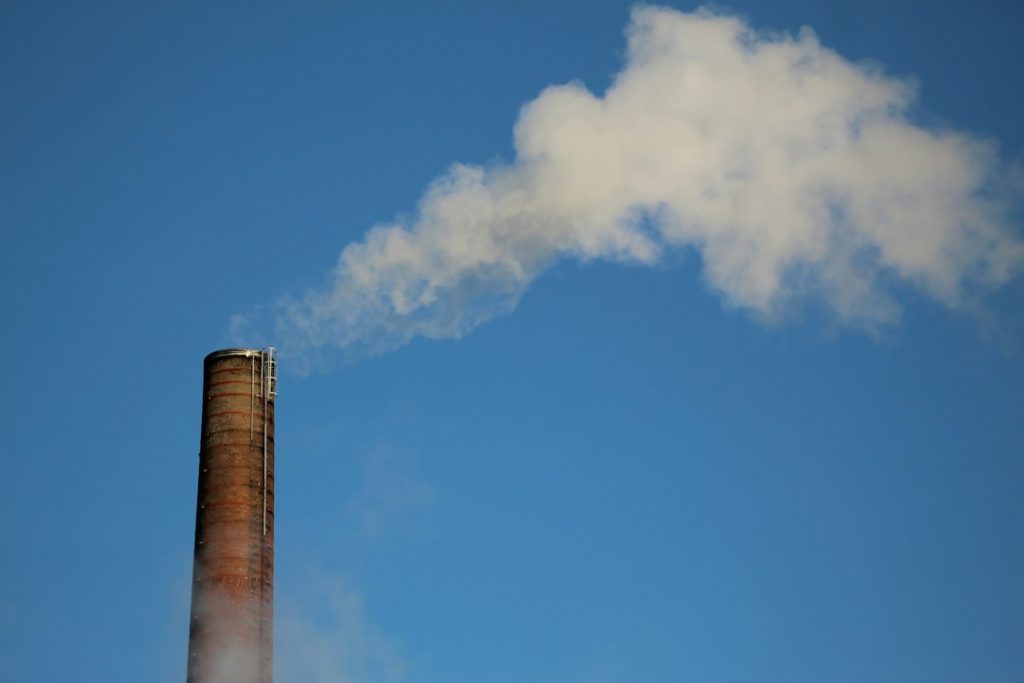Environmental chemistry is the study of the chemical processes and reactions that occur in the environment, including air, water, and soil. It plays a crucial role in understanding the impact of human activities on ecosystems and finding sustainable solutions to environmental challenges. By examining the chemical composition of various environmental components, scientists can identify pollutants and their effects, as well as develop strategies to mitigate their impact.
Summary
- Environmental chemistry is crucial for understanding and protecting ecosystems.
- Air, water, and soil all have unique chemical compositions that impact their quality.
- Chemical pollutants can cause significant harm to the environment and its inhabitants.
- Industrial chemicals and agricultural practices can have negative effects on biodiversity and soil/water quality.
- Emerging contaminants and climate change pose new challenges for environmental chemistry research and solutions.
Chemical Composition of Air, Water, and Soil
Air, water, and soil are essential components of the environment, each with its own unique chemical composition. The air we breathe is primarily composed of nitrogen (78%), oxygen (21%), and traces of other gases such as carbon dioxide, methane, and ozone. Understanding the chemical composition of the atmosphere is crucial for studying air pollution and its effects on human health and climate change.
Water is a vital resource for all living organisms, and its chemical composition varies depending on its source. It consists of two hydrogen atoms bonded to one oxygen atom (H2O). However, water can also contain dissolved gases such as oxygen and carbon dioxide, as well as various minerals and pollutants. Understanding the chemical composition of water is essential for assessing water quality and identifying potential contaminants.
Soil is a complex mixture of minerals, organic matter, water, air, and living organisms. Its chemical composition varies depending on factors such as climate, geology, and land use. Soil contains essential nutrients for plant growth, such as nitrogen, phosphorus, and potassium. However, it can also contain pollutants from human activities, such as heavy metals and pesticides. Understanding the chemical composition of soil is crucial for sustainable agriculture practices and soil remediation efforts.
Chemical Pollutants and Environmental Degradation
Chemical pollutants are substances that are released into the environment through human activities and have harmful effects on ecosystems. They can come from industrial processes, agricultural practices, transportation emissions, and household products. Examples of chemical pollutants include heavy metals, pesticides, volatile organic compounds (VOCs), and greenhouse gases.
These pollutants can have severe effects on the environment. Heavy metals, such as lead and mercury, can accumulate in soil and water, posing a threat to both human health and wildlife. Pesticides can contaminate water sources and harm aquatic organisms. VOCs can contribute to air pollution and the formation of smog. Greenhouse gases, such as carbon dioxide and methane, contribute to climate change and global warming.
Industrial Chemicals and Biodiversity
| Industrial Chemicals and Biodiversity Metrics | Value |
|---|---|
| Number of industrial chemicals registered globally | Over 100,000 |
| Number of threatened species due to chemical pollution | Over 1,000 |
| Percentage of freshwater species affected by chemical pollution | Up to 50% |
| Number of chemicals banned or restricted globally due to their impact on biodiversity | Over 1,000 |
| Estimated economic cost of biodiversity loss due to chemical pollution | Up to £50 billion per year |
Industrial chemicals play a significant role in modern society, but they can also have detrimental effects on biodiversity. Many industrial processes release toxic substances into the environment, leading to pollution and habitat destruction. For example, the release of heavy metals from mining activities can contaminate water sources and harm aquatic organisms. Chemical spills from factories can lead to the death of plants and animals in the affected area.
One notable case study is the pollution of the Minamata Bay in Japan. In the 1950s, a chemical factory released mercury into the bay, leading to severe mercury poisoning in the local population and wildlife. The incident resulted in neurological disorders, birth defects, and death. It highlighted the devastating impact of industrial chemical pollution on biodiversity and human health.
Agricultural Practices and Soil/Water Quality
Agricultural practices have a significant impact on soil and water quality. The use of fertilizers, pesticides, and irrigation systems can lead to nutrient runoff, soil erosion, and contamination of water sources. These practices can degrade soil quality, reduce biodiversity, and contribute to water pollution.
However, sustainable agricultural practices can help mitigate these issues. For example, organic farming avoids the use of synthetic fertilizers and pesticides, relying instead on natural methods to enhance soil fertility and control pests. Conservation agriculture promotes minimal soil disturbance, crop rotation, and cover cropping to improve soil health and reduce erosion. These practices help maintain soil and water quality while ensuring sustainable food production.
Emerging Contaminants and Human Health/Wildlife

Emerging contaminants are substances that have recently been identified as potential pollutants but are not yet regulated. They can include pharmaceuticals, personal care products, flame retardants, and microplastics. These contaminants can enter the environment through various pathways, such as wastewater treatment plants, landfills, and agricultural runoff.
Emerging contaminants can have adverse effects on human health and wildlife. For example, pharmaceuticals can enter water sources and affect aquatic organisms’ reproductive systems. Microplastics can be ingested by marine animals, leading to internal injuries and death. The presence of these contaminants in the environment highlights the need for further research and regulation to protect ecosystems and human health.
Global Climate Change and Environmental Chemistry
Global climate change is one of the most significant challenges facing our planet today, and it has profound implications for environmental chemistry. The increase in greenhouse gas emissions, primarily carbon dioxide from burning fossil fuels, is leading to rising temperatures and changes in weather patterns. These changes have far-reaching effects on air, water, and soil chemistry.
For example, increased carbon dioxide levels in the atmosphere can lead to ocean acidification, as more carbon dioxide dissolves in seawater. This can have detrimental effects on marine organisms that rely on calcium carbonate for their shells or skeletons. Rising temperatures can also affect the solubility of gases in water, leading to changes in oxygen levels and nutrient availability for aquatic organisms.
Sustainable Solutions to Environmental Chemistry Challenges
To address the challenges posed by environmental chemistry, sustainable solutions are needed. These solutions aim to minimize pollution, conserve resources, and promote the well-being of both ecosystems and human populations. Examples of sustainable solutions include:
1. Renewable energy: Transitioning from fossil fuels to renewable energy sources such as solar, wind, and hydropower can reduce greenhouse gas emissions and air pollution.
2. Waste management: Implementing effective waste management strategies, such as recycling and composting, can reduce the amount of waste sent to landfills and minimize pollution.
3. Sustainable agriculture: Promoting organic farming practices, agroforestry, and precision agriculture can help reduce the use of synthetic fertilizers and pesticides, conserve water, and protect soil quality.
4. Green chemistry: Developing and using environmentally friendly chemicals and processes can minimize the production of hazardous substances and reduce pollution.
Environmental Regulations and Policy
Environmental regulations and policy play a crucial role in protecting ecosystems and human health. They provide guidelines for industries, governments, and individuals to follow to minimize pollution and promote sustainable practices. Examples of successful environmental regulations and policy include:
1. The Clean Air Act: This legislation in the United States sets standards for air quality and regulates emissions from industrial sources, vehicles, and power plants.
2. The Water Framework Directive: This European Union directive aims to protect water resources by setting standards for water quality, promoting sustainable water use, and preventing pollution.
3. The Montreal Protocol: This international agreement aims to protect the ozone layer by phasing out the production and use of ozone-depleting substances, such as chlorofluorocarbons (CFCs).
Future Directions in Environmental Chemistry Research and Innovation
As environmental challenges continue to evolve, research and innovation in environmental chemistry are essential. Scientists are exploring new ways to monitor pollutants, develop sustainable materials, and find innovative solutions to environmental problems. Some current areas of research include:
1. Nanotechnology: Researchers are investigating the use of nanoparticles for environmental remediation, water purification, and pollution monitoring.
2. Green materials: Scientists are developing sustainable materials that can replace traditional plastics and reduce waste generation.
3. Environmental monitoring: Advances in sensor technology and data analysis are enabling more accurate monitoring of pollutants in air, water, and soil.
Environmental chemistry plays a vital role in understanding the impact of human activities on ecosystems and finding sustainable solutions to environmental challenges. By studying the chemical composition of air, water, and soil, scientists can identify pollutants and their effects, as well as develop strategies to mitigate their impact. Industrial chemicals, agricultural practices, emerging contaminants, and climate change all pose significant challenges to environmental chemistry. However, through sustainable solutions, environmental regulations, and ongoing research and innovation, we can work towards a healthier and more sustainable future for our planet. It is crucial for individuals to take steps towards sustainable solutions in their daily lives, such as reducing waste, conserving energy, and supporting environmentally friendly practices. By working together, we can protect our ecosystems and ensure a better future for generations to come.
FAQs
What is Environmental Chemistry?
Environmental Chemistry is the study of chemical processes occurring in the environment which includes air, water, soil, and living organisms.
What are the major areas of study in Environmental Chemistry?
The major areas of study in Environmental Chemistry include atmospheric chemistry, aquatic chemistry, soil chemistry, and toxicology.
What are the sources of environmental pollution?
The sources of environmental pollution include industrial activities, transportation, agriculture, and domestic activities.
What are the effects of environmental pollution?
Environmental pollution can cause a range of effects including respiratory problems, skin irritation, cancer, and damage to ecosystems.
What are the methods used to control environmental pollution?
The methods used to control environmental pollution include waste management, pollution prevention, and the use of cleaner technologies.
What is the role of Environmental Chemistry in sustainable development?
Environmental Chemistry plays a crucial role in sustainable development by providing insights into the chemical processes that occur in the environment and developing strategies to mitigate the negative impacts of human activities on the environment.
What are the career opportunities in Environmental Chemistry?
Career opportunities in Environmental Chemistry include environmental consultant, environmental chemist, environmental engineer, and research scientist.


